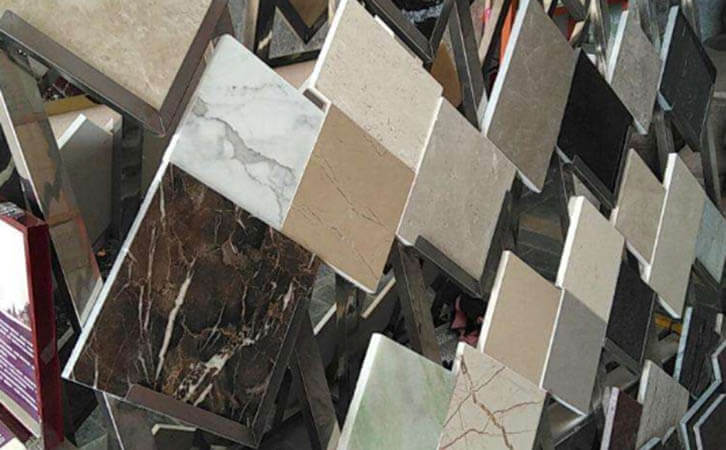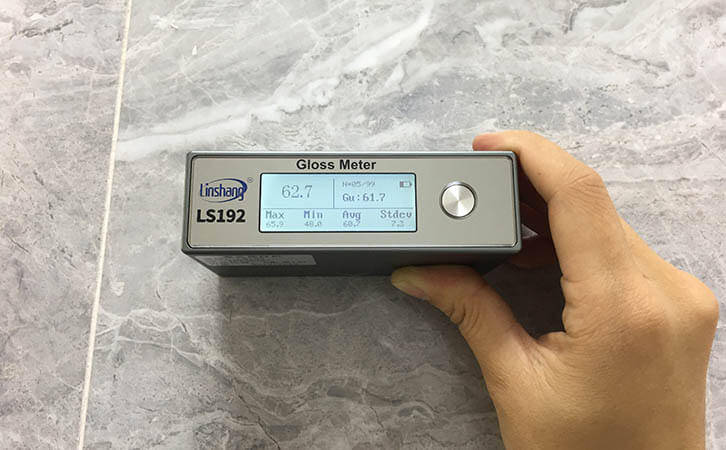Marble Gloss Meter | What Determine the Gloss of the Stone?
The glossiness of stone has theoretical glossiness, polishable glossiness and actual polishing glossiness. In principle, the theoretical gloss can be calculated through the absorption, reflection and refraction of light by minerals; The polishability can be considered in the weathering of stone, the denseness of the structure, the discoloration and the unnatural cleavage of mica. It can be calculated by calculating the factors that affect the glossiness of the stone; The actual polishing glossiness is obtained through actual operation. In addition to the natural factors of the stone, it can be said that the artificial factors play an important role. Such as the method of construction grinding, the results of construction grinding, the dryness of the stone recrystallization hardened sheet, the ambient temperature of stone recrystallization hardening, the method of stone recrystallization hardening and the choice of crystal hardener, etc. The existence of all these uncertain factors will affect the result of the stone recrystallization hardening to a greater or lesser extent.
1. The mineral structure of the stone
From the perspective of the mineral structure of the stone, the size of the crystal grains will affect the gloss of the stone. The larger the crystal particle size, the lower the gloss and the worse the polishing performance. The more uniform the crystal particles, the better the stone polishing performance. There is also a difference in the gloss of the polished stone surface in different measuring directions, that is, the gloss is directional. The consistency of the polished surface of the medium and fine-grained stone in different directions is better. The differences in different directions are decreasing.
2. Hardness of the stone
The hardness of the stone is the main factor that determines the speed of stone grinding and stone recrystallization hardening. The hardness of the stone depends on the hardness of the minerals that make up the stone. It is affected by factors such as the structure of the stone. The hardness of most silicate minerals that make up granite is relatively high. A few minerals such as muscovite and biotite have lower hardness (Mohs hardness is 2.5). The hardness of carbonate minerals and clay minerals of rock is relatively low, so the hardness of granite is greater than that of marble, limestone and slate.

3. Bulk density of the stone
The larger the bulk density of the stone, the better the effect of stone recrystallization and hardening. When the bulk density of the stone is 52.65g / cm3, the throwability of the stone is very good, otherwise the throwability of the stone with a small bulk density is poor. We can solve the problem by scraping the resin with stone, but in actual construction, we do not support this approach. Because it will increase the cost in the first place, there are too many constrained factors (such as the construction period, material selection, resin yellowing, protection of the construction site, etc.). The method we generally use is to choose a stone protective agent to increase the bulk density of the stone.
The water absorption of the stone with large bulk density is smaller than that of the stone with small bulk density. For stone with high water absorption, the reaction time between the stone crystal hardener and the stone surface is too short, which is not conducive to the formation of the stone polishing layer. Terrazzo and concrete polishing are typical examples.
4. Stone gloss test
To determine the gloss of the stone, we use a professional marble gloss meter to measure it. The Linshang LS192 marble gloss meter uses the projection principle of 60 degrees. In simple terms, place the marble gloss meter on the measured object. A 60-degree light is projected out and then the light at a 60-degree angle is refracted back. The light flux reflected from the measured stone is compared with the standard board through a series of internal electronic components. The luminous flux is compared then multiplied by the gloss of the standard board. Finally, it will be converted into data and displayed on the screen to get the accurate gloss value of the stone. LS192 marble gloss meter is mainly composed of light source, lens, receiver and display. This marble gloss meter can be used not only for measuring marble and granite, but also for terrazzo, ceramic tiles, plastic flooring and fiber reinforced plastic boards.
